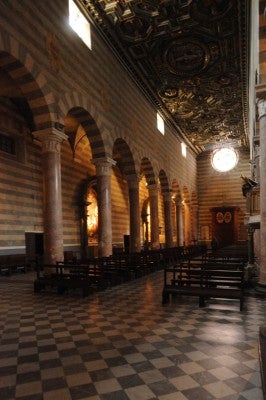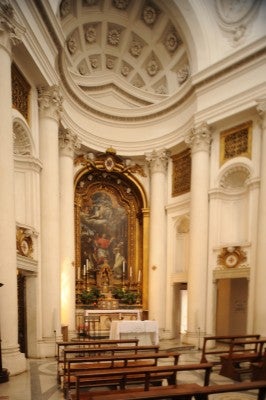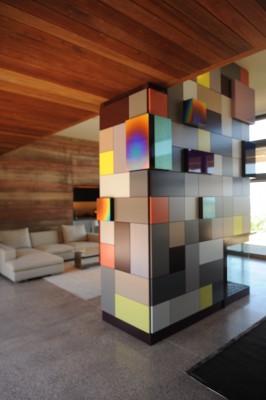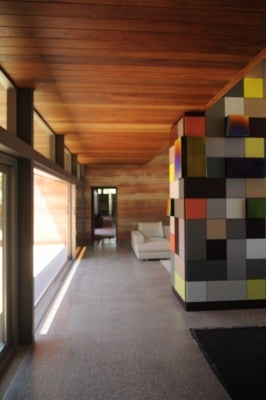I was in Italy recently, visiting one of my favorite cities, Volterra, in Tuscany. I can’t go to Italy without admiring how art and architecture speak to each other there and often integrate beautifully. This is constantly evident in Volterra where the two have a potent and historic dialog. One particular example is the Duomo, a Romanesque church completed in 1120. The architecture is solid, spare, and enduring. Inside is a colorful, ornate ceiling (part of a modification done in the 1500s) as well as niches with sculptures depicting various religious figures.

Each element of the building–what the architect designed, and what the artists created–has its own distinct role and function. The two cooperate but are different from each other. By contrast, much of what is hailed today as “a work of art” in architecture (and called such by architects) seems to me neither great art nor as good as it might be as architecture.

Lou Kahn once famously said, “an artist can make a cart with square wheels, but an architect can’t.” I like Kahn’s clear understanding about the difference between the two fields. I have great respect for artists and enjoy working with them, but I have no desire to be an artist. I love being an architect—a field that seems to me a distinctly different enterprise—for me, both more complex and more consequential than art.
The Torcasso house in New Mexico, which I discussed in another blog, has several elements in it that were done in collaboration with sculptor, Margo Sawyer. I had worked with Margo on two earlier projects–the Austin Convention Center and Discovery Green in Houston. In Austin, Margo’s huge wall piece has HVAC registers incorporated into it, blurring the boundary between building and artwork, but her sensibilities as an artist remained distinctly different from ours as architects throughout the process. I think the work is made stronger by the dual perspectives. The same is true at Discovery Green where the huge art volumes are also the exit from the underground parking garage. Building and art merge amiably, but the piece would not be as good if done just by an artist or just by an architect.

In the New Mexico house the pieces we did in collaboration with Margo divide living area from dining area and dining area from kitchen. They incorporate functional elements like the fireplace and lots of cabinets for storage. The art and architecture are thoroughly integrated and have a wonderful dialog with each other. But, again, I think two distinctly different mind-sets made this project better. We each knew our boundaries and where one’s profession stopped and the other started.
